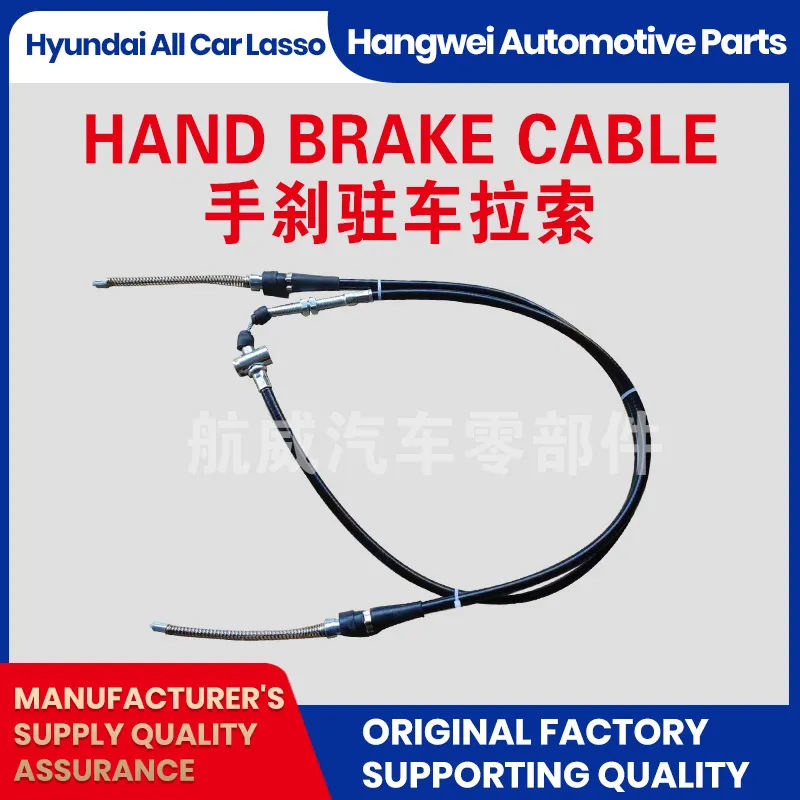throttle cable control
Throttle Cable Control Understanding its Importance and Functionality
Throttle cable control is an integral part of the engine management system in various vehicles, particularly in older cars, motorcycles, and certain types of machinery. The throttle cable connects the accelerator pedal to the throttle body in the engine, playing a crucial role in regulating airflow and, consequently, the engine's power output. Understanding how throttle cable control works can enhance vehicle performance and ensure proper maintenance, thereby prolonging the lifespan of the engine.
At its core, throttle cable control operates on a simple principle when the driver presses on the accelerator pedal, the throttle cable pulls on the throttle body, allowing more air to enter the engine. This increase in airflow results in a corresponding rise in engine speed, providing the necessary power for acceleration. Conversely, when the driver eases off the pedal, the throttle cable retracts, closing the throttle and reducing engine power. This direct mechanical linkage creates an immediate response that drivers can feel, offering a tactile feedback that many enthusiasts cherish.
One of the main advantages of throttle cable control is its simplicity. Unlike electronic throttle control systems, which rely on sensors and electronic signals, a mechanical throttle cable is straightforward and less prone to technical failures. This simplicity often leads to easier repairs and maintenance, especially in older vehicles where technology may be less complex. Mechanics can quickly identify issues such as frayed cables, sticking or binding in the throttle assembly, or improper adjustment, allowing for efficient troubleshooting.
throttle cable control

However, there are downsides to consider. As vehicles have evolved, many manufacturers have transitioned to electronic throttle control systems, which use sensors to detect the position of the accelerator pedal and adjust the throttle accordingly. This system offers benefits such as improved fuel efficiency, reduced emissions, and the potential for more sophisticated engine management strategies, including traction control and cruise control enhancements. Despite this, enthusiasts often prefer throttle cable control for its direct connection and the sense of engagement it provides during driving.
Proper maintenance of the throttle cable is crucial for optimal performance. Regularly checking the cable for signs of wear, such as frays, kinks, or corrosion, can prevent potential failures that might lead to engine power loss or erratic behavior. Additionally, lubrication of the cable and ensuring it is free from debris can enhance its responsiveness. If the throttle feels sticky or unresponsive, adjusting the cable tension might also be necessary to restore the intended functionality.
In modern applications, even as electronic systems gain prominence, understanding throttle cable control remains essential. Drivers who appreciate the fundamentals of their vehicles often prefer the raw and unfiltered connection that throttle cables provide. For those who own vehicles with this system, mastering its nuances not only helps in maintenance but also enhances the overall driving experience.
In conclusion, throttle cable control serves as a vital link between the driver and the engine, influencing both performance and driver interaction. Understanding its mechanics and maintaining it properly can lead to better control and an overall enjoyable driving experience. As technology evolves, appreciating the simplicity and effectiveness of the throttle cable will always have its place in automotive culture.
-
Upgrade Your Control with Premium Throttle CablesNewsAug.08,2025
-
Stay in Control with Premium Hand Brake CablesNewsAug.08,2025
-
Experience Unmatched Performance with Our Clutch HosesNewsAug.08,2025
-
Ensure Safety and Reliability with Premium Handbrake CablesNewsAug.08,2025
-
Enhance Your Vehicle with High-Performance Clutch LinesNewsAug.08,2025
-
Elevate Your Ride with Premium Gear CablesNewsAug.08,2025
